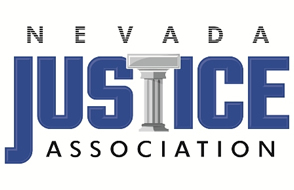The fifth annual Division of Industrial Relations Workers’ Compensation conference, held on August 19 and 20, 2015, was attended mostly by people servicing employers , insurers, and third-party administrators in the workers’ compensation industry in Nevada. Few of the speakers focused on educating the attendees about the needs of injured workers, with the notable exception of the fire fighters who spoke about the risks of toxic chemical exposures to fire fighters.
I had expected DIR to cater to the insurers, as usual, but I had hoped to hear something from DIR about what it was doing or at least planned to do to improve the system for injured workers. I couldn’t attend break-out sessions that were held simultaneously, but the other claimants’ attorneys who attended the sessions I didn’t attend confirmed that this was indeed a one-sided conference hosted by DIR.
I heard that Katherine Godwin, supervisor of the WCS Medical Unit and Paul Pirruccello, D.C., gave an excellent and informative presentation about permanent partial disability issues that are frequently disputed. I believe that Ms. Godwin tries very hard to ensure the integrity of the DIR rotating rating list process. Dr. Pirruccello is one of the most knowledgeable and fairest rating physicians, respected equally by adjusters and claimants’ attorneys. This session was originally advertised by DIR as being about the 6th edition of the AMA Guides. Apparently, DIR had erroneously predicted that the self-insured employers would prevail in getting the 6th edition of the Guides adopted at the last legislative session. That didn’t happen, and Dr. Pirruccello was called on to provide an alternate talk on rating evaluations.
Lezlie Wooten, Claims Manager for CCMSI, and Jeanne Dubose, Claims examiner for Sierra Nevada Administrators, had intelligent comments about the statutes concerning disputed permanent partial disability awards. I particularly liked their common sense suggestions on how to resolve those disputes without litigation. They also addressed a problem I am encountering with medical providers billing injured workers instead of the workers’ compensation administrators on known comp claims. They agreed with me that this was a serous problem that was unfairly affecting the credit of injured workers. They stated that they could only tell claimants to file a DIR complaint.
I asked moderator Suhair Susan Sayegh, DIR WCS Southern District Manager, why DIR has yet to fine those medical providers who routinely bill inured workers, and she declined to answer. I’ve filed numerous DIR complaints against medical providers who engage in this illegal practice of billing injured workers, but I’ve yet to see DIR fine any of these recurrent violators. DIR’s approach has been to re-route the particular bill to the TPA, and forget about preventing it from happening again to other injured workers.
Rajat Jain, Chief Insurance Examiner for the Nevada Division of Insurance, provided many statistics and graphs concerning his agency’s shared responsibility with DIR to regulate Nevada’s insurers and their TPA’s. I asked whether he had statistics concerning the number of fines DIR has assessed against insurers, self-insured employers and TPA’s. He didn’t have that information with him. He did know, however, that the Commissioner of Insurance has not revoked the certificate of any insurer or TPA because they had incurred 2 or more fines of $1000 or more by DIR in 1 year. He emphasized that the Commissioner was not required to revoke certificates, but had the discretionary authority to do so.
I then asked Mr. Jain whether he knew that DIR had recently obtained permission form the DIR Advisory Council to write off $842,000 in fines as uncollectible. He wasn’t aware of that, and he didn’t offer an explanation as to why any fines should ever be uncollectible if his agency has the power to revoke the license of an insurer or TPA. It appeared that Mr. Jain wasn’t very interested in the regulatory role of the DOI over workers’ compensation insurers and TPA’s unless it had to do with their solvency. This was disappointing to me that a second state agency in Nevada, specifically charged with protecting the rights of injured workers, cares as little as DIR about the people who most need their help.













